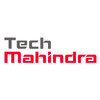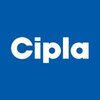Filter interviews by
IVM Pharmacia Interview Questions, Process, and Tips
IVM Pharmacia Interview Experiences
1 interview found
I applied via Walk-in and was interviewed in May 2021. There were 3 interview rounds.
Interview Questionnaire
6 Questions
- Q1. What is principle of uv spectrophotometer , hplc ?
- Ans.
UV spectrophotometer measures the absorption of light by a sample, while HPLC separates and analyzes components in a mixture.
UV spectrophotometer uses UV light to measure the absorbance of a sample at a specific wavelength.
HPLC separates and analyzes components in a mixture by passing it through a column filled with a stationary phase.
Both techniques are commonly used in analytical chemistry for quantitative and qualit...
- Q2. What are natural indicators?
- Ans.
Natural indicators are substances that change color in response to changes in pH levels.
They are derived from natural sources such as plants, fruits, and vegetables.
Examples include red cabbage, turmeric, and beetroot.
They are used in various applications such as in food, cosmetics, and medicine.
They are eco-friendly and non-toxic compared to synthetic indicators.
- Q3. What is lamberts law and bears law?
- Ans.
Lambert's law and Beer's law are both related to the absorption of light by a substance.
Lambert's law states that the amount of light absorbed by a substance is directly proportional to its thickness and concentration.
Beer's law states that the amount of light absorbed by a substance is directly proportional to its concentration and the path length of the light through the substance.
Both laws are used in spectroscopy t...
- Q4. What is working of uv spectrophotometer ?
- Ans.
A UV spectrophotometer measures the absorption of ultraviolet (UV) light by a sample to determine its concentration or purity.
UV spectrophotometers use a UV light source to emit a specific wavelength of light.
The light passes through a sample, and the amount of light absorbed is measured by a detector.
The absorption data is then used to calculate the concentration or purity of the sample.
UV spectrophotometers are commo...
- Q5. What is titration and types of various titration ?
- Ans.
Titration is a technique used to determine the concentration of a substance in a solution by reacting it with a known solution.
Titration involves the gradual addition of a solution of known concentration (titrant) to a solution of unknown concentration (analyte) until the reaction between the two is complete.
The endpoint of a titration is determined by using an indicator or by monitoring a physical change in the soluti...
- Q6. What is titrant and titrend ?
- Ans.
Titrant is a solution of known concentration used in titration. Titrend is the solution being analyzed.
Titrant is added to the titrend until the reaction is complete.
The concentration of the titrant is used to determine the concentration of the titrend.
Titrant and titrend are used in titration to determine the unknown concentration of a solution.
Examples of titrants include sodium hydroxide, hydrochloric acid, and pota
Interview Preparation Tips
Top IVM Pharmacia QC Chemist Interview Questions and Answers
QC Chemist Interview Questions asked at other Companies
Top trending discussions






Interview questions from similar companies

I was interviewed in Jan 2025.
(14 Questions)
- Q1. What is the code to read a CSV file into a DataFrame using PySpark?
- Q2. What is your approach to refactoring code?
- Q3. How do you optimize pyspark code, how is peer review done,
- Q4. What is the SQL query to join employee departments along with the count of employees in each department?
- Q5. What is lazy evaluation in PySpark, and can you provide examples to illustrate this concept?
- Q6. How do you write SQL queries using PySpark code?
- Q7. What are the methods used to load data into a database?
- Q8. What is the redshift spectrum?
- Q9. What are the different types of indexing used in databases?
- Q10. Could you describe your experience with sharing your screen to write PySpark code during scenarios in a Teams call, especially when you were using a mobile device?
- Q11. What types of documentation are typically created during a project, and how is this documentation prepared?
- Q12. How do you ensure that your code is written optimally, and how do you evaluate, debug, and test it for various scenarios?
- Q13. What kind of documentation is written for pyspark code
- Q14. What are the best practices that you follow?
Interview Preparation Tips
2. As a data platform architect, the role requires extreme level understanding of pyspark and sql not just overview as in other data architect role.
3. Docu

I was interviewed in Jan 2025.
(2 Questions)
- Q1. Sale price on on day
- Q2. Start working
Interview Preparation Tips
Key points to remember:
Prioritize networking:
Utilize your network to connect with people in the industry, attend industry events, and leverage platforms like LinkedIn to build relationships with potential hiring managers.
Tailor your resume:
Include relevant sales keywords throughout your resume to catch the attention of recruiters and ensure your experience aligns with the job description.
Practice your sales pitch:
Prepare compelling stories from your past experiences to demonstrate your ability to close deals, overcome objections, and build rapport during interviews.
Follow up consistently:
After submitting applications, send personalized follow-up emails to maintain engagement with potential employers.
Research companies:
Actively monitor companies you're interested in by following their social media and news to stay informed about potential openings.
Highlight transferable skills:
Even if you lack direct sales experience, emphasize skills like communication, persuasion, relationship building, and problem-solving that translate well to a sales role.
Ask insightful questions:
During interviews, demonstrate your knowledge of the company and role by asking thoughtful questions that show your genuine interest.
Be enthusiastic and confident:
Convey a positive attitude and express your passion for sales to make a strong impression on potential employers.

(3 Questions)
- Q1. Basics like introduction background
- Q2. Introduce yourself
- Q3. What is your background
(1 Question)
- Q1. Interview are very simple and average person can clear huge hiring
(1 Question)
- Q1. 1. Screening 2. Introduction interview basic questions 3. Voice assessment 4. Written assignment 5. Confery test 6. Operation test 7. If qualified final manager round List looks scary to crack but v...

I was interviewed in Jan 2025.
(15 Questions)
- Q1. Explain the difference between ArrayList and LinkedList in Java. ArrayList is implemented as a dynamic array, while LinkedList is a doubly linked list. ArrayList provides fast random access (O(1) complexit...
- Q2. What are the advantages and disadvantages of using Java’s synchronized keyword for thread synchronization? The synchronized keyword ensures that only one thread can access a block of code at a time. It pre...
- Q3. What is the difference between == and .equals() in Java? == checks for reference equality, meaning it compares memory addresses. equals() checks for value equality, which can be overridden in user-defined ...
- Q4. How does the Java garbage collector work? Garbage collection in Java automatically reclaims memory occupied by unused objects. The JVM has different types of GC algorithms, including Serial, Parallel, CMS,...
- Q5. What are the main features of Java 8? Java 8 introduced lambda expressions, enabling functional-style programming. The Stream API allows efficient data processing with map, filter, and reduce operations. D...
- Q6. Describe the differences between checked and unchecked exceptions in Java. Checked exceptions must be handled using try-catch or declared with throws. Unchecked exceptions (RuntimeException and its subclas...
- Q7. What is the Java Memory Model, and how does it affect multithreading and synchronization? The Java Memory Model (JMM) defines how threads interact with shared memory. It ensures visibility and ordering of ...
- Q8. Can you explain the difference between method overloading and method overriding in Java? Method overloading allows multiple methods with the same name but different parameters. It occurs within the same cl...
- Q9. What are functional interfaces in Java, and how do they work with lambda expressions? A functional interface is an interface with exactly one abstract method. Examples include Runnable, Callable, Predicate...
- Q10. What is a Java Stream, and how does it differ from an Iterator? Streams enable functional-style operations on collections with lazy evaluation. Unlike Iterators, Streams support declarative operations lik...
- Q11. Explain the concept of immutability in Java and its advantages. An immutable object cannot be changed after it is created. The String class is immutable, meaning modifications create new objects. Immutabl...
- Q12. What is the difference between final, finally, and finalize in Java? final is a keyword used to declare constants, prevent method overriding, or inheritance. finally is a block that executes after a try-c...
- Q13. Explain the Singleton design pattern in Java. Singleton ensures that only one instance of a class exists in the JVM. It is useful for managing shared resources like database connections. A simple implemen...
- Q14. What are Java annotations, and how are they used in frameworks like Spring? Annotations provide metadata to classes, methods, and fields. @Override, @Deprecated, and @SuppressWarnings are common built-in ...
- Q15. How do Java Streams handle parallel processing, and what are its pitfalls? Parallel streams divide data into multiple threads for faster processing. The ForkJoin framework handles parallel execution inter...

I was interviewed in Jan 2025.
(8 Questions)
- Q1. Self intro and project architecture
- Q2. What are the data sources used?
- Q3. Bigquery architecture
- Q4. Partition vs clustering
- Q5. Bq commands on create table and load csv file
- Q6. Bq commands on show the schema of the table
- Q7. Explain about leaf nodes and columnar storage.
- Q8. How many slots are there in bigquery?

I was interviewed in Jan 2025.
A sequence was provided: 4181, 2684, 1597, 987, 610.
first 2 are given and write code for other value calculation using java 8
The second question required writing a reverse of a palindrome using both Java 8 streams. I was able to successfully write both and clear the first round.
(6 Questions)
- Q1. Interviewer was himself not knowing anything as it was walkin drive he was sitting infront of me and checking questions on phone Introduction that he inturrepted in between when I was introducing myself
- Q2. What are the features of Java 17, specifically related to sealed classes, including their syntax and necessity, along with the potential errors encountered when invoking a sealed class?
- Ans.
Java 17 introduces sealed classes to restrict inheritance and improve code maintainability.
Sealed classes are declared using the 'sealed' keyword followed by the permitted subclasses.
Subclasses of a sealed class must be either final or sealed themselves.
Errors may occur when trying to extend a sealed class with a non-permitted subclass.
- Q3. Java 8 feathers stream api, functional interface, Intermittent operator ,Ternary operator, Prediction,Bi predicate. Answered all successfully
- Q4. Draw low level design of implementation of notify me if item is back in stock in a ecommerce application
- Ans.
Implementation of 'notify me if item is back in stock' feature in an ecommerce application
Create a database table to store user notifications for out-of-stock items
Implement a service to check item availability and send notifications to subscribed users
Provide a user interface for users to subscribe to notifications for specific items
- Q5. All design patterns which I know. Asked me to implement adapter pattern on paper
- Q6. Then given a problem that concurrent way perform operation on excell to decrease the response time
Interview Preparation Tips

(5 Questions)
- Q1. What is DHCP and how many type of DHCP and please explain how to work DHCP DORA Process ?
- Q2. What is OU and how to configure and Please Explain ADC ?
- Q3. What is APIPA and how to work and what is APIPA Range.
- Q4. Please explain OSPF and BGP ?
- Q5. What is OSI layer and please explain all Layer ?

I was interviewed in Jan 2025.
(5 Questions)
- Q1. As per hr question
- Q2. What is your strength
- Q3. Why are you choose this company?
- Q4. After 5 years where you see which position?
- Q5. Why should we hire you?

P2P Accounts Payable Executive Interview Questions & Answers
Accentureposted on 6 Jan 2025
I applied via Naukri.com and was interviewed in Dec 2024. There was 1 interview round.
(5 Questions)
- Q1. How many variance in sap?
- Ans.
The number of variances in SAP can vary depending on the specific processes and transactions being analyzed.
The number of variances in SAP can be influenced by factors such as data entry errors, system glitches, or discrepancies in invoice processing.
Variances in SAP may be identified through reconciliation processes, exception reports, or manual reviews of accounts payable transactions.
Examples of variances in SAP inc...
- Q2. We cac explain the all accounts receivable and accounts payable
- Ans.
Accounts receivable and accounts payable are two important aspects of a company's financial operations.
Accounts receivable refers to money owed to a company by its customers for goods or services provided.
Accounts payable refers to money owed by a company to its suppliers or vendors for goods or services received.
Accounts receivable is an asset on the balance sheet, while accounts payable is a liability.
Managing accoun...
- Q3. What is the cost element and cost center?
- Ans.
Cost element and cost center are key concepts in accounting for tracking and allocating costs within an organization.
Cost element refers to the specific types of costs incurred by an organization, such as materials, labor, or overhead.
Cost center is a specific department, team, or function within an organization that is responsible for incurring costs.
Cost elements are assigned to cost centers to track and allocate cos...
- Q4. How many we have currencies in sap?
- Ans.
SAP supports over 160 currencies worldwide.
SAP supports over 160 currencies for global transactions.
Currencies can be configured in SAP using transaction code OB22.
Each currency is assigned a unique currency code (e.g. USD for US Dollar, EUR for Euro).
- Q5. How many types of projects
- Ans.
There are various types of projects, including internal projects, external projects, research projects, and development projects.
Internal projects focus on improving processes within the organization.
External projects involve working with external partners or clients.
Research projects aim to gather data and analyze findings.
Development projects focus on creating new products or services.
Examples: IT system implementati...
Interview Preparation Tips
- mba fresher
* Identify Your Strengths & Weaknesses:
* Strengths: What are you good at? What do you enjoy doing? What are your unique skills and talents?
* Weaknesses: What areas do you need to improve? What are your biggest challenges?
* Define Your Career Goals:
* Short-term: What kind of job are you looking for? What industry are you interested in? What salary range are you targeting?
* Long-term: What is your ideal career path? What are your long-term professional aspirations?
2. Enhance Your Job Search Strategy
* Build a Strong Online Presence:
* LinkedIn: Create a professional and engaging LinkedIn profile.
* Portfolio/Website: If applicable, showcase your work through a portfolio or personal website.
* Network, Network, Network:
* Attend industry events: Conferences, meetups, and workshops.
* Informational interviews: Connect with people working in your field of interest.
* Leverage your existing network: Let your friends, family, and former colleagues know you're job searching.
* Tailor Your Resume & Cover Letter:
* Customize: Tailor your resume and cover letter to each specific job application.
* Keywords: Use keywords from the job description to increase your chances of getting noticed by Applicant Tracking Systems (ATS).
* Quantify your achievements: Use numbers and data to demonstrate your accomplishments.
* Master the Job Interview:
* Practice: Prepare for common interview questions (behavioral, technical, etc.).
* Research: Learn about the company and the role you're interviewing for.
* Ask insightful questions: Demonstrate your interest and engagement.
3. Continuous Improvement
* Skill Development:
* Online courses: Platforms like Coursera, Udemy, and edX offer a wide range of courses.
* Certifications: Obtain relevant industry certifications to enhance your credentials.
* Volunteer work: Gain valuable experience and build your network.
* Stay Updated:
* Industry news: Keep up-to-date with the latest trends and developments in your field.
* Job market trends: Monitor job boards and industry publications to understand the current job market.
Key Advice:
* Be patient and persistent: The job search process can be challenging, but don't give up.
* Stay positive and maintain a growth mindset: Focus on your strengths and opportunities for improvement.
* Take care of yourself: Prioritize your physical and mental well-being during your job search.
Remember: The job market is constantly evolving. Be adaptable, proactive, and resourceful in your job search efforts. Good luck!
IVM Pharmacia Interview FAQs
Tell us how to improve this page.
Interview Questions for Popular Designations
- Senior Executive Interview Questions
- Associate Interview Questions
- Software Developer Interview Questions
- Senior Associate Interview Questions
- Sales Executive Interview Questions
- Associate Software Engineer Interview Questions
- Java Developer Interview Questions
- Senior Software Engineer Interview Questions
- Show more
Interview Questions from Similar Companies
IVM Pharmacia Reviews and Ratings
based on 6 reviews
Rating in categories
|
QC Chemist
4
salaries
| ₹1.5 L/yr - ₹2.2 L/yr |
|
Senior Officer
3
salaries
| ₹2.3 L/yr - ₹3.1 L/yr |

Sun Pharmaceutical Industries

DRJ & CO

Cipla

Biocon Limited
- Home >
- Interviews >
- IVM Pharmacia Interview Questions










